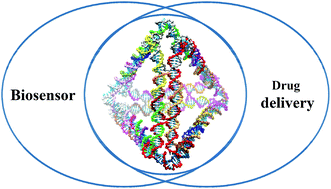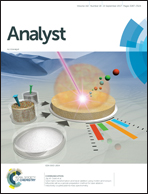DNA tetrahedron nanostructures for biological applications: biosensors and drug delivery
Abstract
With the rapid development of DNA nanotechnology, various DNA nanostructures with different shapes and sizes have been self-assembled using “bottom-up” fabrication strategies and applied to a wide range of fields such as biosensors, drug delivery and tools for molecular biology. As a classical and simple polyhedron, DNA tetrahedron can be easily synthesised by a one-step assembly. Due to the excellent biocompatibility and cellular permeability, it provides a universal and promising platform to construct a series of biosensors and drug delivery systems for living cells studies. Moreover, the high programmability of DNA tetrahedron determines its capability to perform artful design and combine with other materials. Herein, we review and summarise the development and applications of DNA tetrahedron in living cell studies. We mainly focus on two parts, cellular biosensors for the detection of nucleic acids, proteins, small molecules and cancer cells and drug delivery systems for chemotherapy, immunotherapy, photodynamic therapy and gene silencing. With the rapid progress in DNA tetrahedron as well as DNA nanotechnology, new avenues and opportunities have opened up in analytical chemistry, molecular biology and medicine.

- This article is part of the themed collection: Recent analytical chemistry science from China


 Please wait while we load your content...
Please wait while we load your content...